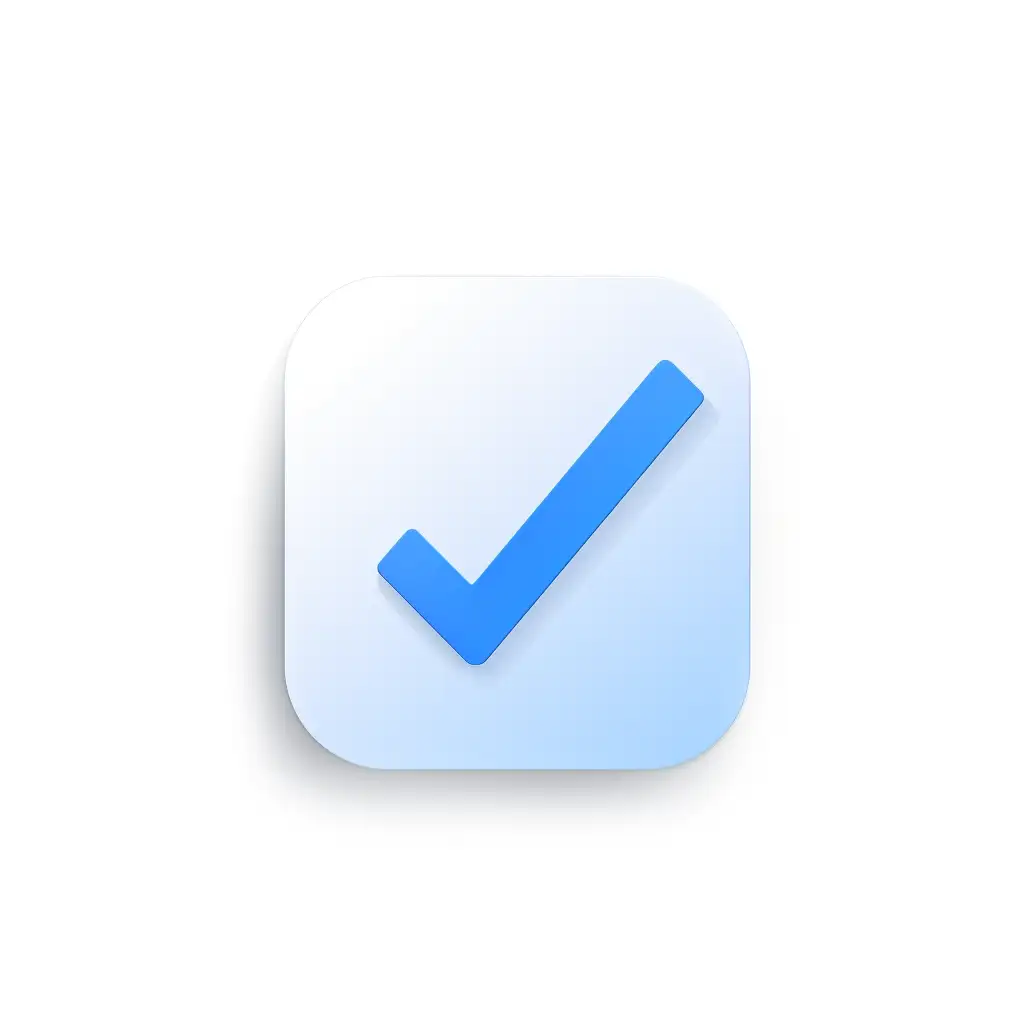What Exactly Is Facial Clocking?

What is Facial Clocking?
Facial clocking is a cutting-edge biometric technology that represents a significant leap forward in how businesses manage employee attendance and time tracking. At its core, facial clocking utilizes facial recognition technology to instantly identify employees, recording their times of arrival and departure with unparalleled precision. This method stands in stark contrast to traditional timekeeping methods, such as punch cards or manual sign-in sheets, by offering a contactless, secure, and highly efficient alternative.
The Technology Behind Facial Clocking
Facial clocking systems employ sophisticated facial recognition algorithms that analyze specific landmarks on an individual’s face. These landmarks, or nodal points, include numerous dimensions and aspects of the face, such as the distance between the eyes, the width of the nose, the depth of the eye sockets, and the shape of the cheekbones. By capturing these unique biometric markers, facial clocking technology can accurately verify an employee’s identity against a pre-registered image in mere seconds.
Advantages Over Traditional Timekeeping
The advent of facial clocking technology has addressed many of the shortcomings associated with conventional timekeeping methods. Here are a few of the key advantages:
- Contactless Authentication: In an era where hygiene and health safety have become paramount, the contactless nature of facial clocking minimizes the risk of transmitting infections, making it an ideal solution for workplace health and safety protocols.
- Security and Fraud Prevention: Facial clocking significantly reduces the opportunities for fraudulent time entries, such as buddy punching, where one employee clocks in or out for another. The system’s reliance on biometric data ensures that only the registered employee can record their attendance, enhancing the integrity of timekeeping records.
- Operational Efficiency: By automating the time tracking process, facial clocking systems streamline operations, freeing up administrative resources and reducing the time spent on manual entry and verification of attendance data.
- Data Accuracy and Integrity: Advanced algorithms and the unique biometric identifiers used in facial recognition ensure high accuracy in employee identification. This precision mitigates errors in attendance records, providing a reliable basis for payroll processing and labor compliance.
Leveraging Advanced Algorithms for Enhanced Timekeeping
The efficiency and reliability of facial clocking are underpinned by advanced algorithms that continuously learn and adapt to changes in an employee’s appearance. These systems can account for variations in lighting, facial expressions, and even minor changes in appearance over time, ensuring consistent and accurate identification.
By integrating these sophisticated technologies, facial clocking provides an unparalleled solution to manage workforce attendance. Its adoption signifies a move towards more secure, efficient, and accurate timekeeping methods, setting a new standard in employee management and operational efficiency.
How Does Facial Clocking Work?
Facial clocking systems represent a sophisticated integration of hardware and software designed to offer a seamless and secure method for tracking employee attendance through biometric recognition. Here’s a closer look at each step of the process:
Image Capture
- Initial Step: The process begins the moment an employee positions themselves in front of the facial clocking device. These devices are typically equipped with high-resolution cameras designed to operate in various lighting conditions, ensuring clear image capture across different environments.
- Camera Technology: Modern facial clocking systems may use infrared cameras or 3D imaging to capture detailed facial features. This technology helps in accurately recognizing an employee even in low light conditions or when changes in facial appearance occur (e.g., with or without glasses, facial hair variations).
Feature Extraction
- Biometric Data Analysis: Once a clear image is captured, the system’s software analyzes specific biometric markers on the face. This involves complex algorithms that map the face’s geometry, focusing on unique features that distinguish one individual from another.
- Data Points: The software extracts numerous data points, such as the spatial relationship between facial features. This can include measurements like the distance between the eyes, the shape of the cheekbones, and the contour of the eyebrows. These data points are converted into a digital code, creating a unique facial signature for each employee.
Verification
- Matching Process: The digital facial signature is then compared against a database of pre-registered employees. This database contains the facial signatures of all enrolled individuals, allowing the system to perform a quick match.
- Algorithm Efficiency: Advanced facial recognition algorithms are capable of conducting these matches with high accuracy, swiftly identifying the employee. These algorithms are designed to accommodate variations in facial expression and minor changes in appearance, ensuring reliable verification.
Time Logging
- Record Creation: Upon successful verification, the system automatically logs the time of the event, whether it’s a clock-in or clock-out. This timestamp is securely stored in the system’s database, associated with the employee’s unique identification.
- Integration with Payroll Systems: Many facial clocking systems are integrated with payroll and HR management systems. This allows for automatic updating of attendance records, which can be used for labor tracking, payroll processing, and even access control purposes.
- Data Security and Privacy: Ensuring the security and privacy of biometric data is a priority. Facial clocking systems are designed with robust encryption and data protection measures to safeguard against unauthorized access and ensure compliance with data protection regulations.
Continuous Learning and Adaptation
- System Updates: Facial clocking technology is not static; it learns from each interaction. Over time, the system can adapt to recognize changes in an employee’s appearance, reducing the likelihood of false rejections.
- Feedback Loops: Some systems include mechanisms for feedback and correction, allowing administrators to update an employee’s profile if significant changes in appearance occur, thereby maintaining high levels of accuracy and reliability.


Benefits of Facial Clocking
Facial clocking technology is transforming the landscape of workforce management by offering a range of benefits that surpass traditional timekeeping methods. These benefits not only enhance operational efficiency but also contribute to a safer, more secure workplace environment.
Enhanced Security
- Prevention of Time Theft and Buddy Punching: One of the most significant advantages of facial clocking is its ability to combat time theft and buddy punching, where one employee clocks in for another. This fraudulent behavior is virtually eliminated, as the system requires the physical presence of the individual, verified through unique facial features.
- Data Security: Beyond preventing fraudulent time entries, facial clocking systems are designed with advanced security measures to protect sensitive biometric data. Encryption and secure data storage ensure that an individual’s facial recognition data cannot be accessed or used by unauthorized parties.
Accuracy
- Reduction of Human Error: Traditional manual entry methods are prone to errors, from accidental mismatches to intentional falsification of records. Facial clocking automates the attendance process, significantly reducing the risk of these errors and ensuring that time records accurately reflect employees’ working hours.
- Reliable Timekeeping Records: The precision of facial recognition technology ensures that timekeeping records are consistently accurate, providing a reliable foundation for payroll processing and compliance with labor regulations.
Efficiency
- Streamlined Timekeeping Process: By automating the clock-in and clock-out process, facial clocking systems streamline timekeeping tasks. This not only saves administrative time but also reduces the workload on HR departments, allowing them to focus on more strategic tasks.
- Integration with Other Systems: Many facial clocking systems seamlessly integrate with payroll and HR management software, further enhancing operational efficiency by automating the transfer of time and attendance data for payroll processing and labor tracking.
Health & Safety
- Contactless Method: In the wake of health crises such as the COVID-19 pandemic, the contactless nature of facial clocking systems has emerged as a crucial benefit. By eliminating the need for physical contact with devices, these systems significantly reduce the risk of spreading infectious diseases.
- Adaptability to Various Environments: Facial clocking technology can be effectively used in a wide range of environments, including those with stringent health and safety requirements. Its adaptability ensures that it can meet the specific needs of different sectors, from healthcare to manufacturing, where hygiene and safety are paramount.
Additional Advantages
- Improved Employee Experience: The simplicity and speed of facial clocking enhance the employee experience by minimizing queues and wait times at clock-in stations. This improvement in routine processes can contribute to higher employee satisfaction and morale.
- Environmental Benefits: By reducing the need for physical time cards, badges, or sign-in sheets, facial clocking systems also offer environmental benefits. They contribute to a reduction in paper waste and the environmental footprint of manufacturing plastic badges or cards.
Applications of Facial Clocking
Facial clocking technology’s versatility allows it to be adapted across a wide array of sectors, providing solutions that extend well beyond basic time and attendance tracking. Its applications are diverse, ranging from enhancing workplace management to securing premises and ensuring regulatory compliance.
Workplace Management
- Enhancing Productivity: By automating the process of time tracking, facial clocking technology significantly reduces the administrative burden on staff, allowing them to focus on core activities. This increase in operational efficiency can lead to higher productivity levels across the organization.
- Improving Payroll Accuracy: Accurate time and attendance data are crucial for correct payroll processing. Facial clocking minimizes errors in timekeeping, ensuring employees are paid precisely for the hours they work, which in turn, contributes to higher employee satisfaction and trust in the employer.
Access Control
- Securing Premises: Facial clocking systems can double as sophisticated access control solutions, ensuring that only authorized individuals can enter certain areas of a facility. This application is particularly valuable in sensitive environments, such as research labs, financial institutions, and data centers, where security is paramount.
- Enhanced Visitor Management: Beyond regulating employee access, facial clocking can streamline visitor management, allowing for pre-registration of visitors and swift, secure access to facilities without compromising security protocols.
Compliance
- Adhering to Labor Laws and Regulations: With stringent labor laws and regulations governing work hours, overtime, and breaks, maintaining accurate records is essential. Facial clocking systems provide an auditable trail of time and attendance records, helping organizations demonstrate compliance with relevant labor standards.
- Supporting Health and Safety Initiatives: Compliance with health and safety regulations is another critical consideration for many businesses. Facial clocking contributes to a healthier workplace by minimizing the spread of infectious diseases through its contactless operation and can be part of broader health and safety protocols.
Additional Applications
- Education Sector: Schools and universities can implement facial clocking to monitor student attendance, enhance campus security, and manage access to restricted areas, contributing to a safer and more secure educational environment.
- Healthcare Facilities: In healthcare settings, where sanitation and security are crucial, facial clocking can manage staff and visitor access while supporting hygiene protocols by reducing touchpoints.
- Hospitality Industry: Hotels and resorts can use facial clocking for both staff management and enhancing guest experiences, such as expedited check-ins and access to exclusive areas without physical keys or cards.
- Retail and Service Industries: For retail stores and service-oriented businesses, facial clocking can help manage peak times and staff allocation more efficiently, improving customer service and operational effectiveness.

Choosing the Right Facial Clocking System
Selecting the most suitable facial clocking system is a critical decision that can significantly impact an organization’s operational efficiency, security, and compliance. Here are detailed considerations for each key factor:
Accuracy
- Verification Accuracy: The core of a facial clocking system’s effectiveness lies in its ability to accurately recognize and verify employees’ identities. High verification accuracy reduces the risk of false rejections (failing to recognize an employee) or false acceptances (mistakenly recognizing an unauthorized person as an employee). Look for systems boasting high accuracy rates in diverse lighting and environmental conditions.
- Adaptability to Changes: Consider how well the system can adapt to changes in an employee’s appearance, such as facial hair, makeup, or glasses. Systems that can still accurately verify identities despite these changes will minimize disruptions and the need for manual overrides.
Integration
- Compatibility with Existing Systems: Seamless integration with your organization’s current HR and payroll systems is crucial for automating and streamlining processes. The right facial clocking system should easily connect with these systems to transfer data efficiently, reducing manual data entry and the potential for errors.
- Flexible Integration Capabilities: Look for systems that offer flexible integration options, including API access or pre-built connectors for popular HR software. This ensures that as your systems evolve, your facial clocking solution can continue to integrate smoothly with new platforms and technologies.
User-Friendliness
- Ease of Use for Employees: The system should be straightforward for employees to use, with minimal steps required to clock in or out. User-friendly interfaces and clear instructions will help reduce bottlenecks and ensure quick adoption across the workforce.
- Simplicity for Administrators: From setup to daily management, the system should offer administrators intuitive tools to manage user profiles, view reports, and adjust settings. Consider systems that provide comprehensive training and support to ensure administrators can fully leverage the system’s capabilities.
Data Security
- Robust Data Protection Measures: Given the sensitivity of biometric data, a facial clocking system must have stringent security protocols to protect against unauthorized access and breaches. Look for systems that encrypt data both at rest and in transit, adhere to industry-standard security certifications, and comply with relevant data protection regulations.
- Privacy Compliance: Ensure the system complies with local and international privacy laws, such as GDPR in Europe or CCPA in California. The provider should offer clear policies on data storage, retention, and deletion, along with tools that enable compliance with employees’ privacy rights.
Additional Considerations
- Scalability: Choose a system that can grow with your organization. It should be able to handle an increasing number of users and locations without significant upgrades or cost increases.
- Support and Maintenance: Evaluate the level of ongoing support and maintenance provided by the vendor. Responsive support, regular updates, and clear communication about new features can significantly enhance the system’s value over time.
- Cost Effectiveness: Consider not only the initial purchase price but also the total cost of ownership, including any subscription fees, maintenance costs, and potential savings from increased efficiency and reduced time theft.
FAQ Section: Understanding Facial Clocking
What is facial clocking?
Facial clocking is a technology that uses facial recognition to identify individuals for the purpose of tracking their work hours. It captures and analyzes facial features to log when employees clock in and out, providing a secure and efficient method for attendance tracking.
How secure is facial clocking?
Facial clocking is highly secure, as it utilizes unique biometric data to verify identity. This reduces the risk of fraudulent time entries and increases the overall security of the timekeeping process. Additionally, many systems employ data encryption and secure storage practices to protect personal information.
Can facial clocking systems work in low light?
Yes, many modern facial clocking systems are equipped with infrared cameras or advanced imaging technologies that enable them to accurately recognize faces even in low light conditions or varying light environments.
Is facial clocking reliable?
Facial clocking is considered highly reliable due to its use of sophisticated algorithms and biometric verification. These systems are designed to accurately identify individuals, reducing errors associated with manual time tracking methods.
How does facial clocking handle privacy concerns?
Facial clocking systems address privacy concerns through strict data protection policies, including storing minimal personal data, using data encryption, and complying with privacy regulations such as GDPR. Users are typically informed about the data collection process and given control over their information.
Can facial clocking be used for remote workers?
Facial clocking is primarily used for on-site attendance tracking. However, some systems offer mobile applications that use smartphone cameras to allow remote workers to verify their identity and log their work hours securely from any location.
How does facial clocking integrate with other HR systems?
Most facial clocking systems can integrate with existing HR and payroll systems to streamline workforce management processes. This allows for automatic updating of attendance records, simplifying payroll calculation and reducing administrative workload.
What happens if the facial clocking system doesn’t recognize an employee?
If the system fails to recognize an employee, most facial clocking systems have procedures in place, such as prompting for a second attempt or requiring manual verification by an administrator. This ensures that time tracking remains accurate and secure.
Are there any limitations to facial clocking?
While facial clocking offers numerous benefits, it may have limitations, such as initial costs for hardware and software, the need for regular updates, and potential challenges in recognizing faces due to changes in appearance or facial coverings. However, continuous advancements in technology are addressing these challenges.
How do employees feel about using facial clocking?
Employee perceptions of facial clocking can vary. Some appreciate its efficiency and the enhanced security it provides, while others may have concerns about privacy and surveillance. Clear communication about the benefits and safeguards can help address these concerns.

Disclaimer: The content provided on this webpage is for informational purposes only and is not intended to be a substitute for professional advice. While we strive to ensure the accuracy and timeliness of the information presented here, the details may change over time or vary in different jurisdictions. Therefore, we do not guarantee the completeness, reliability, or absolute accuracy of this information. The information on this page should not be used as a basis for making legal, financial, or any other key decisions. We strongly advise consulting with a qualified professional or expert in the relevant field for specific advice, guidance, or services. By using this webpage, you acknowledge that the information is offered “as is” and that we are not liable for any errors, omissions, or inaccuracies in the content, nor for any actions taken based on the information provided. We shall not be held liable for any direct, indirect, incidental, consequential, or punitive damages arising out of your access to, use of, or reliance on any content on this page.
Trusted By
Trusted by 3.2M+ Employees: 21 Years of Service Across Startups to Fortune 500 Enterprises
Join our ever-growing community of satisfied customers today and experience the unparalleled benefits of TimeTrex.










Strength In Numbers
Join The Companies Already Benefiting From TimeTrex
Time To Clock-In
Start your 30-day free trial!
Experience the Ultimate Workforce Solution and Revolutionize Your Business Today
- Eliminate Errors
- Simple & Easy To Use
- Real-time Reporting

Saving businesses time and money through better workforce management since 2003.
Copyright © 2025 TimeTrex. All Rights Reserved.

